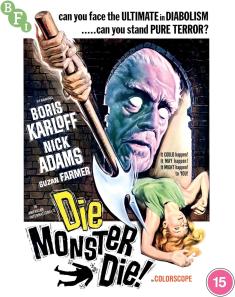Portal 2
Overview -
The experience in learning how to “think in portals” while playing Valve’s original brain-child Portal isn’t something that can be replicated, nor can it be erased from memory. Once you’ve learned how the positioning, the momentum, the physics, and the timing behind placing orange-and-blue portals all factors together, the way you see environments in games changes; in essence, it hardwires your DNA to keep a eye on those elements, whether you really want to or not. Valve knows this, and they also know that that a sequel wouldn’t be able to elude this baggage, where previous sessions in using the portal gun undoubtedly carry over to a new slate of puzzles. How does Portal 2 shake its awareness of the original and create a distinctive experience? By retooling the hauntingly ascetic atmosphere, continuing the original eerie narrative, and incorporating a shiny new cache of environmental tools at Chell’s disposal. And don’t, for a second, consider glossing over the multiplayer.
Video Review
Reaching back into their bag-‘o-tricks with their robust Source engine, Portal 2’s array of angular rooms, gritty textures, and consistent movement are often jaw-dropping impressive at 1080p. Part of it resides in the impeccable art and level design, which strategically uses shadows and textures to convey specific, escalating demeanors as the story progresses. The graphics engine captures the framerate flow and consistent motion without much in the way of hiccups, with only the slight slow-down and jagged line to be seen on a few occasions. Bursts of color really test the palette in-place within the engine, from Nickelodeon-caliber orange goop and deep greens in foliage to the array of textural slates, reaching far and wide with nice depth-of-field capabilities (glancing long into the stretches of the factory proves an attention-grabbing, ample viewing experience). Of course, this isn’t a game that prides itself on explosions and characters on-screen; instead, it’s the rendering of liquid elements, shifting laser beams, and balls-out motion blurs that it hinges on, and Valve have really knocked it out of the ballpark.
Audio Review
Ahhh, GLaDOS and her echoing, robotic voice. Seriously, it’ll give you nightmares with its sinister passive-aggressive cordiality, alongside the eerie electronic score that back this 5.1 surround design. She – and, sure, Wheatley as well, not to mention ole Cave’s intercom chatter – tracks along with Chell’s rotation while you’re initially exploring each room, the harmonious or gloppy sound effects from the environmental tools flowing along with the same spatial awareness. The sound you’ll constantly hear, of course, is the jetting blast from your portal gun, which gracefully scoops into the lower-frequency channel for a mildly throaty burst, while the subtle thud from landing a lengthy jump, the splash into acidic water, or the ratcheted noise from spring-loaded platforms are vigorously thrusted from the surroundings with impressive mid-range punch. Valve’s all about immersing you in the world of the creepy, echoic depths of Aperture’s labs, and the capability for the layered sound design to keep you continuously observant of the atmosphere deserves praise, even if it doesn’t persist with punchy activity.
The folks at Valve have succeeded in nailing a sequel to Portal. That in itself is an accomplishment; from the simple use of a device that creates orange and blue gateways which take you from Point A to Point B, they’ve managed to not only come close in matching the original’s puzzling inventiveness, but also find a way to differentiate the atmosphere, toss in new toys, and blossom the germ of a story told. Spectacular graphics, faultless voiceover work, and sublime sound design dress up the challenging test chambers, which aren’t quite as difficult for veterans of Valve’s universe but are just an involving and complex in arriving at their solutions. The main campaign’s plot offers a brief experience with limited replay value, but it’s one of the most gripping of 2011, by far, and also arrives with an equally-captivating multiplayer segment – which, as previously stated, might be more challenging than the core game itself. Portal 2 will assuredly be on many year-end lists (undoubtedly including mine) , and it deserves every accolade it earns.












